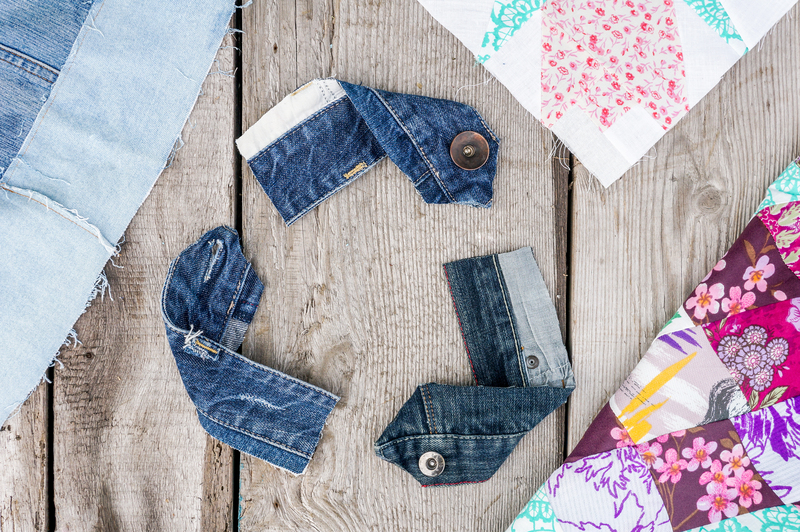Step Up Your Sustainability Game With Transformative Upcycling Projects
Are you searching for creative ways to live greener, cut down on waste, and make a positive impact on our planet? It's time to step up your sustainability game with inspiring and transformative upcycling projects! Whether you're a DIY enthusiast or a newcomer to eco-friendly initiatives, upcycling provides an exciting path to environmental responsibility--and amazing new creations. Ready to make a difference? Let's dive into how upcycling can change the way you live, decorate, and consume.
What is Upcycling? Understanding the Concept
Upcycling is more than just a trend--it's a revolutionary approach to sustainability. Unlike traditional recycling, which breaks down materials for reuse, upcycling involves transforming waste or unwanted products into higher-value or more useful items. This reduces waste, limits resource consumption, and sparks creativity. Think of upcycling as giving forgotten items a stylish new lease on life!
- Upcycling vs. Recycling: Recycling often degrades material quality over cycles. Upcycling maintains or improves it.
- The Environmental Impact: By diverting items from landfills and decreasing demand for new products, upcycling shrinks your carbon footprint.
- Personal Benefits: It's a cost-effective, rewarding process that enhances your space--and your sustainability credentials!

Why Is Upcycling Crucial for Sustainability?
The global push for environmental sustainability highlights the importance of reducing, reusing, and repurposing. Transformative upcycling projects directly address these goals by:
- Reducing Waste: The average person throws away hundreds of kilos of trash each year, much of which ends up in a landfill.
- Saving Resources: Manufacturing new materials requires energy, water, and raw resources. Upcycling skips that burden.
- Cutting Carbon Emissions: Fewer products in landfills and reduced production demands mean fewer greenhouse gases released into the atmosphere.
When you step up your sustainability game with upcycling, you actively participate in building a more resilient, eco-friendly future.
Transformative Upcycling Project Ideas for Every Home
Do you want to bring sustainability into your daily life? Start with these accessible--and transformative--upcycling projects. Not only are they environmentally beneficial, but they also add unique character to your home.
1. Upcycled Furniture: Giving Old Pieces New Purpose
Instead of tossing that worn-out coffee table or faded chair, consider upcycling furniture. With a little imagination (and some tools), old items can become:
- Chic benches from broken beds
- Elegant shelving from used ladders
- Storage ottomans from vintage suitcases
This not only saves you money but also allows you to express your unique style with one-of-a-kind statements.
2. Creative Upcycled Home Decor
Revitalize home decor with these easy upcycling ideas:
- Glass Jars: Use empty food jars as candle holders, storage containers, or even mini vases for kitchen herbs.
- Old T-Shirts: Weave them into colorful rugs, pillow covers, or macrame plant hangers.
- Wine Corks: Assemble them into fun trivets, coasters, or pinboards for your workspace.
3. Garden and Outdoor Upcycling Projects
Your landscaping can also benefit from transformative upcycling:
- Tire Planters: Paint old tires and use them as vibrant raised beds for flowers or veggies.
- Pallet Furniture: Discarded pallets can be turned into everything from vertical gardens to outdoor lounges.
- Upcycled Watering Cans: Repurpose household containers (old kettles, pitchers) as rustic watering cans.
4. Sustainable Upcycled Fashion
Fashion is a major contributor to waste, but upcycled clothing can help:
- Denim Projects: Turn worn jeans into stylish tote bags, wallets, or even wall organizers.
- Braided Accessories: Use leftover fabric scraps for headbands, bracelets, or belts.
- Embroidered Patches: Cover stains or holes with fun, personally designed patches to extend garment life.
Step-by-Step Guide to Starting Your Own Upcycling Project
Are you wondering how to get started? Follow this simple guide:
Step 1: Identify and Collect Materials
Survey your home for items you rarely use or plan to discard. Focus on:
- Glass jars and bottles
- Worn-out furniture
- Old clothing or linens
- Electronics and gadgets
- Pallets, crates, or cardboard
Step 2: Prepare Materials
- Clean thoroughly--remove labels, wash fabrics, sand wood surfaces, and disassemble where needed.
- Sort items by potential use: storage, decor, building material, etc.
Step 3: Design Your Transformation
- Draw inspiration from online tutorials, social media, and upcycling communities.
- Sketch your design and identify tools or supplies you'll need.
Step 4: Get Creative and Assemble
- Use non-toxic paint or adhesives if possible.
- Mix and match materials for a unique aesthetic.
- Don't be afraid to adapt as you go--upcycling thrives on creativity!
Step 5: Showcase and Share
- Display your finished project proudly in your home, garden, or office.
- Share before-and-after photos on social media to inspire others to join the upcycling movement.
Benefits of Transformative Upcycling Projects
When you step up your sustainability game with upcycling, you enjoy a range of perks. Here's why it's so rewarding:
- Waste Reduction: Less landfill, less pollution, less guilt!
- Personal Savings: Upcycled goods are often free or far cheaper than new buys.
- Unique Results: Your projects are truly one-of-a-kind, reflecting your personality and ingenuity.
- Skill Development: You'll acquire new skills in crafting, woodworking, sewing, or design.
- Community Impact: Upcycling inspires friends, family, and neighbors to adopt conscious, sustainable living.
Eco-Friendly Tips for Successful Upcycling
Are you ready to maximize the eco-friendliness of your upcycling projects? Consider these expert tips to ensure you truly transform your sustainability game:
- Use Recycled or Natural Materials: When buying additional supplies, opt for items made with recycled, organic, or sustainable content.
- Avoid Harmful Chemicals: Choose water-based paints and non-toxic adhesives to protect your health and the environment.
- Repurpose Tools: Borrow, rent, or swap tools rather than purchasing new ones to keep your carbon footprint small.
- Educate and Inspire: Talk about your upcycling projects at community groups, schools, or on social media.
- Donate Surplus Upcycled Items: If you make more than you need, donate or sell creations at local sustainable markets.
Inspirational Global Upcycling Movements
Upcycling is a growing global movement with exciting examples everywhere, including:
- Fashion Brands: Designers now release entire collections from upcycled materials, challenging the fast-fashion industry.
- Urban Art Installations: Artists transform urban waste into vibrant murals and sculptures, raising environmental awareness.
- Community Initiatives: Grassroots projects swap upcycled goods, run repair cafes, or teach upcycling workshops.
- Furniture Redesign Contests: Local governments and companies are hosting competitions to promote creativity and sustainability.
Your transformative upcycling projects are part of a worldwide push for positive change!
Top Tips for Sustainable Upcycling Success
- Start Small: Don't overwhelm yourself with big projects right away. Try a simple jar-to-vase or T-shirt-to-bag conversion.
- Share Tools and Space: Collaborate with neighbors or co-ops to access everything you need for free or low cost.
- Keep Learning: Follow sustainability blogs, subscribe to upcycling YouTube channels, and join local eco-groups for ongoing inspiration.
- Celebrate Your Achievements: Reward yourself--and your family--for every upcycling win!
Common Mistakes to Avoid in Upcycling
Even the most sustainable intentions can backfire if you're not careful. Avoid these common pitfalls:
- Overbuying Supplies: Focus on using what you already have, rather than buying lots of new materials.
- Ignoring Safety: Wear gloves, masks, and eye protection as needed. Always keep your workspace ventilated.
- Too Much Perfectionism: Upcycled items don't need to look "store-bought." Embrace their rustic or unique flaws!

How to Spread the Upcycling Message In Your Community
Transformative upcycling projects aren't just for your home--they can inspire an entire community!
- Host a Workshop: Teach friends and neighbors how to turn trash into treasure.
- Organize a Swap Meet: Exchange upcycled goods to reduce buying new materials and foster creativity.
- Involve Local Schools: Upcycling is a fun, hands-on way to teach children about sustainability and innovation.
Conclusion: Step Up Your Sustainability Game With Upcycling!
Adopting transformative upcycling projects is a powerful way to step up your sustainability game and make a real difference in the world. Every upcycled creation not only diverts waste but also tells a story of creativity, care, and commitment to our shared future. So whether it's turning glass jars into beautiful home decor or fashioning discarded wood into dazzling furniture, your sustainable journey starts now.
Take the leap into transformative upcycling today. Share your progress, inspire your community, and help build a greener, more vibrant tomorrow!
Ready to Try It?
Find your first upcycling project, gather your materials, and watch as you transform everyday items into sustainable masterpieces. *Step up your sustainability game with upcycling*--and show the world what's possible when creativity and eco-consciousness unite!